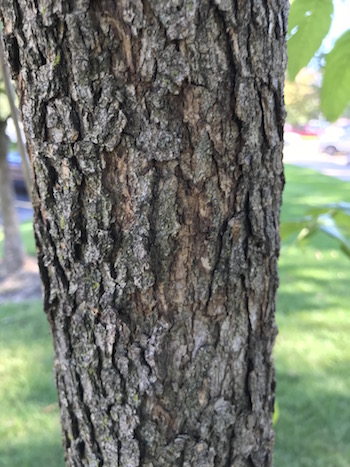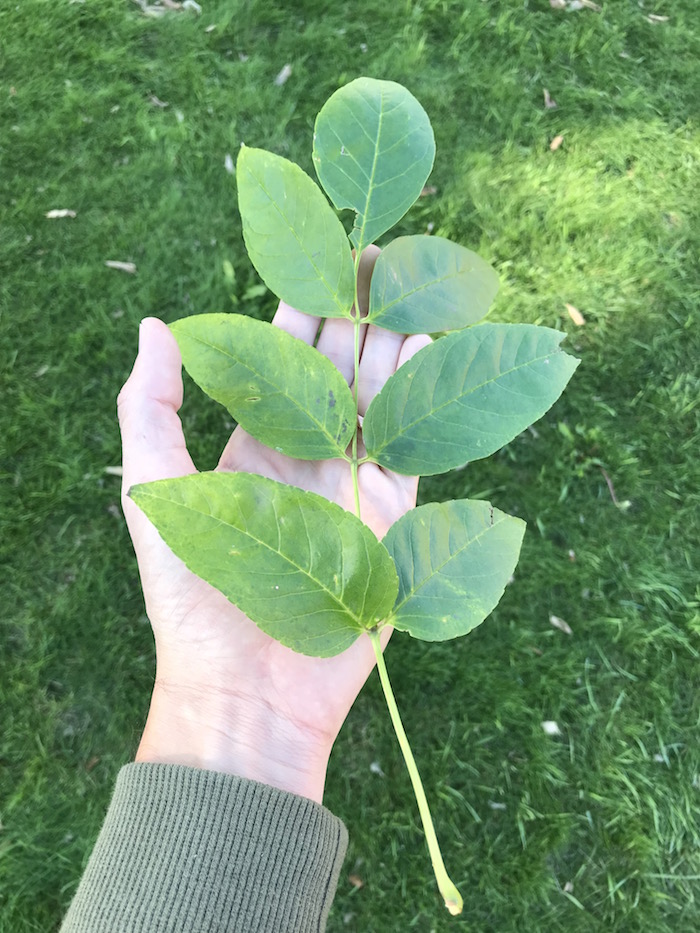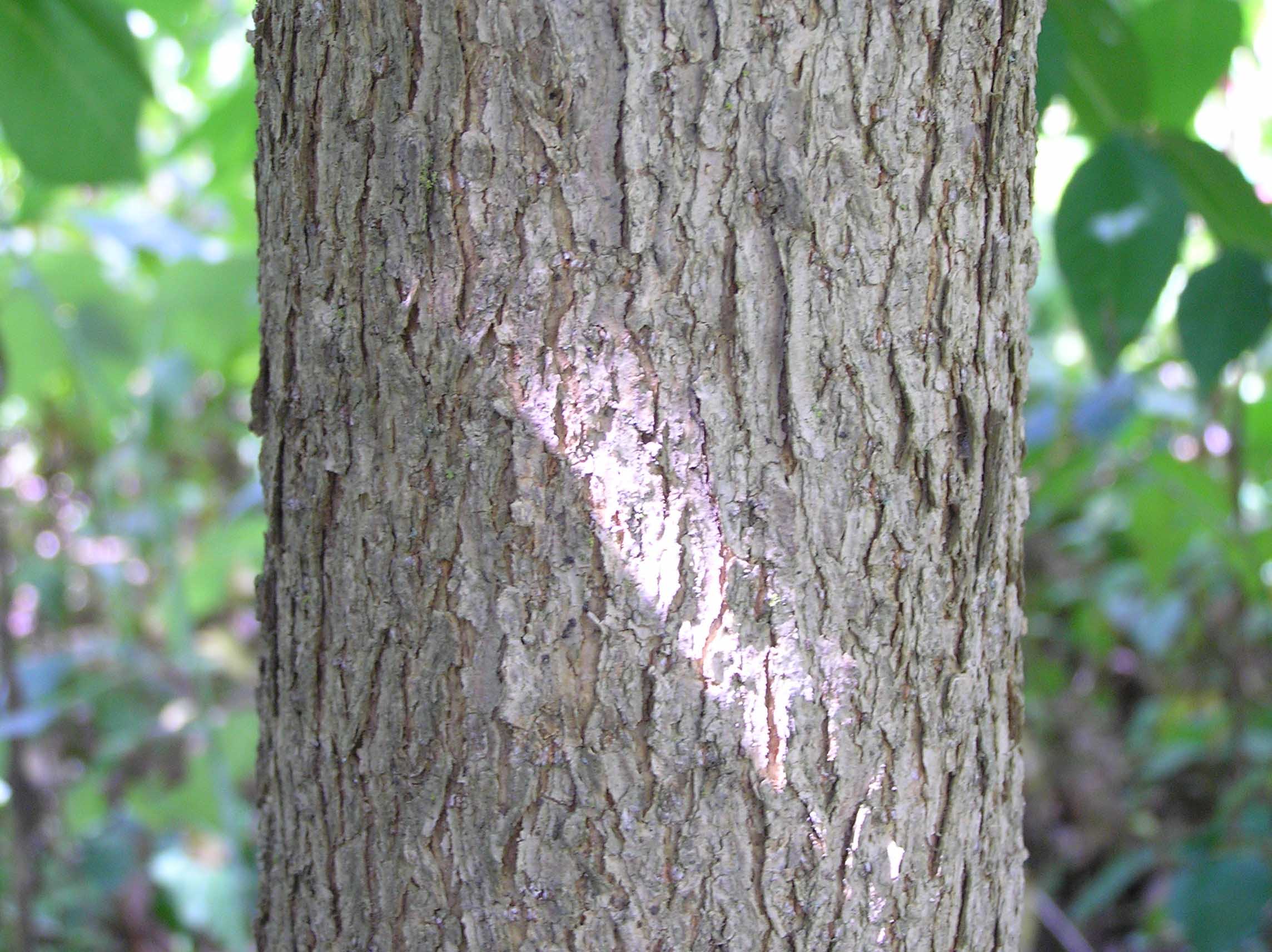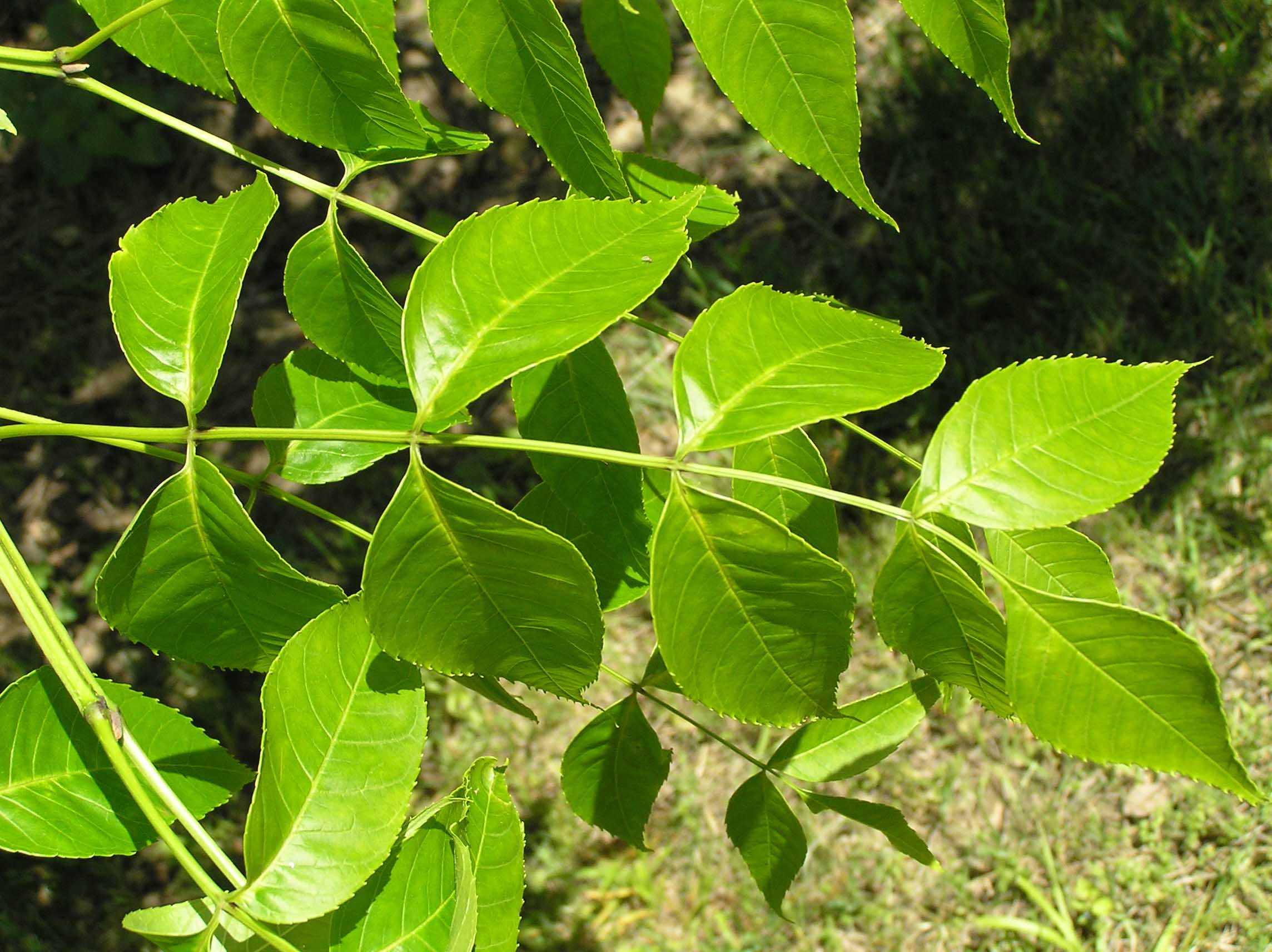blue ash tree identification
Its botanical namequadrangulatacomes from the trees four-sided twigs. Heres a black ash sapling at Cedar Bog in Champaign County Ohio.
25 m and have an irregularly rounded crown.
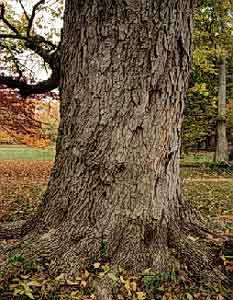
. While other woody plants such as mountainash and pricklyash have ash in their name they are not true ash or Fraxinus species. Until now ash trees have had. The blue ash is a medium-sized tree that can be identified by its squarish twigs which is the origin of the botanical name Fraxinus quadrangulata or four-cornered ash.
Ash trees are in the Fraxinus genus within the olive Oleaceae family of woody plants. Grows on Rocky Bluffs. Theres a white ash green ash red ash blue ash and black ash.
Green and white ash are the most commonly found ash species in the Midwest with blue ash being rare. Ash trees are one of the common native tree species in the eastern United States and they are also frequently planted as street or landscaping trees. This means one compound leaf is made up of many leaflets mini-leaves that form a larger leaf.
Black ash is a very special tree because it is one of the few woody plants that can grow in persistently satyrated soil ie swamps. Blue ash trees are medium-sized trees in the Fraxinus genus. The ash trees dont grow taller than 82 ft.
Fruiting occurs early July through late August. To identify an ash tree the first thing you should look for is opposite branching. Blue Ash is one of a handful of species in the Fraxinus genus that are used as commercial lumber.
Americana black ash F. Blue ash trees get their name from a dark blue or black dye extracted from the trees inner bark. White ash buds are paired with a leaf scar beneath the.
Similarly its branches are also located opposite to one another on the tree. Nigra and blue F. To properly identify ash trees use the following criteria.
Ash species attacked by emerald ash borer include green Fraxinus pennsylvanica white F. 35 to 60 ft. The blue ash Fraxinus quadrangulata is a medium to large-sized tree that is usually 40 to 60 feet tall but can attain a height of 150 feet with a trunk diameter of 3 feet.
It was used by pioneers as blue dye. Blue ash has 7 to 11 leaflets and distinctive 4-angled corky wings on the stem. Blooming occurs throughout June.
Blooming occurs throughout June. Ash trees always have opposite branching. Pennsylvanica green ash F.
One very prominent feature that you can notice in the Ash tree is the arrangement of the leaves which is precisely opposite to one another on the branches. When stained ash can look very similar to oak Quercus spp although oaks have much wider rays which are visible on all wood surfaceseven on flatsawn surfaces where they appear as short. They are often used as shade lawn and street trees and were once the most-planted urban tree across the US.
Nigra and blue ash F. Another good identifying feature for ash trees Fraxinus is that they have pinnately compound leaves. Isolated populations exist in Alabama Southern Ontario and small sections of the Appalachian Mountains.
The blue ash Fraxinus quadrangulata is a medium to large-sized tree that is usually 40 to 60 feet tall but can attain a height of 150 feet with a trunk diameter of 3 feet. Quadrangulata as well as horticul- tural cultivars of these species. How To Identify Blue Ash Trees Fraxinus quadrangulata The blue ash tree got its common name from its inner bark that will turn blue when it is exposed to air.
Horticultural cultivars of these species are commonly planted in urban areas. There are four native species of ash in Wisconsin. There is a range of 5-11 leaflets that make up a leaf of an ash tree generally.
Of the ash in Minnesota the blue ash is the easiest to identify due to the square edges of. Green ash Fraxinus pennsylvanica white ash F. The size of the blue ash 50 to 75 feet makes it a great shade tree.
You can identify ashes by looking for trees with opposite branching not many trees do this and compound leaves formed by clusters of leaflets. Fraxinus quadrangulata is exclusively referred to as blue ash. Black ash has 7 to 11 leaflets and is found in wet woods.
White ash Fraxinus americana green ash Fraxinus pennsylvanica and blue ash Fraxinus quadrangulata. In addition Fraxinus excelsior European Ash is sometimes cultivated as a landscape tree in the Eastern United States and Canada. Its not quite as strong or dense as the related White Ash Fraxinus americana.
50 to 75 ft. This species can be identified year-round. It is the only eastern ash with square twigs.
You can identify the Ash tree by its leaves branches bark and the seeds. Many ash species have some color as pat of their common name. Extension Bulletin E-2942 New May 2005.
Only true ash are susceptible to attack by emerald ash borer. Ash is a member of the olive family and consequently has some unlikely relatives including forsythia lilac privet and olive. Blue Ash Fraxinus quadrangulata a Wisconsin Threatened plant is found in rich upland hardwoods often with dolomite near the surface.
Similarly its branches are also located opposite to one another on the tree. How To Identify Ash Tree Species From Other Ash Trees. Blue ash has a gelatinous substance on its inner bark that turns blue when exposed to air.
Americana white ash F. White and green ash are the most commonly planted species in. Ashes are often very tolerant of urban environments and have been planted extensively as street trees.
Quadrangulata blue ash F. The blue ash genus name Fraxinus is from the Latin name for the Old World ash species. Fraxinus quadrangulata the blue ash is a species of ash native primarily to the Midwestern United States from Oklahoma to Michigan as well as the Bluegrass region of Kentucky and the Nashville Basin region of Tennessee.
This is the quality for. Other native ash trees less commonly found include black ash Fraxinus nigra and blue ash Fraxinus quadangulata not shown. There are three common species of ash in middle Tennessee.
This color was extracted to make dye. The leaves are 8 to 12 inches long with 7 to 11 leaflets 3 to 5 inches long oval or lance shaped and finely toothed margins. Green and white ash are the most commonly found ash species in the Midwest.
This means that pairs of branches extend off of the tree from the same point but on opposite sides.

Emerald Ash Borer Guelph A Community Response Initiative Page 3
Moodboard Quickly Build Beautiful Moodboards And Easily Share The Results
Blue Ash Fraxinus Quadrangulata
Blue Ash Fraxinus Quadrangulata
Seeking Survivor Ash Trees The Michigan Nature Guy S Blog

Blue Ash Natural Resource Stewardship
How Do I Know If I Have An Ash Tree Vanderbilt Arboretum Vanderbilt University

Fraxinus Quadrangulata Landscape Plants Oregon State University

What Tree Is That Online Edition At Arborday Org

4 Things You Didn T Know About The Blue Ash Hobby Farms

Blue Ash Department Of Horticulture
Blue Ash Fraxinus Quadrangulata
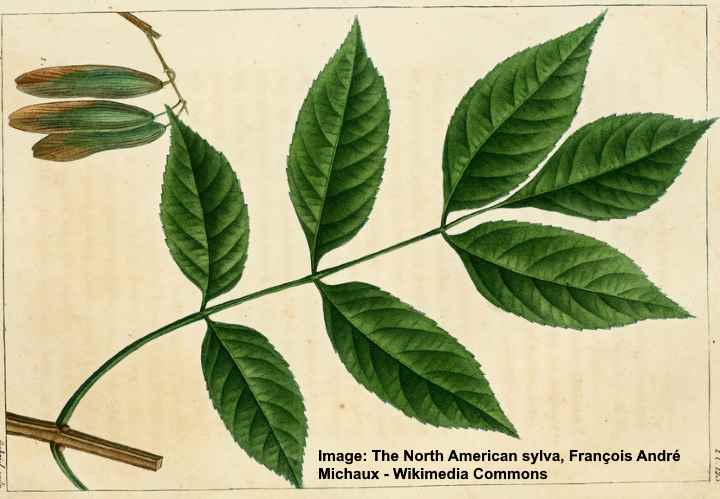
Ash Trees Types Bark And Leaves Identification Guide Pictures
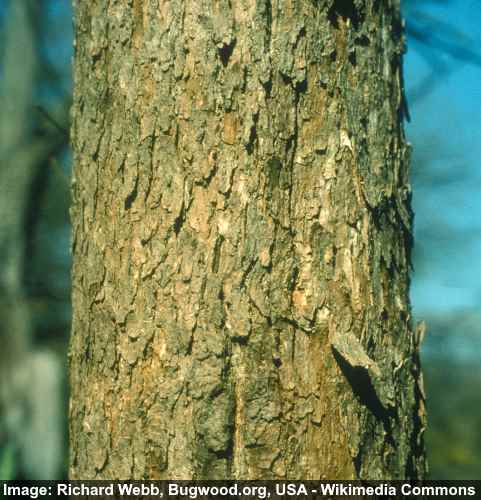
Ash Trees Types Bark And Leaves Identification Guide Pictures
